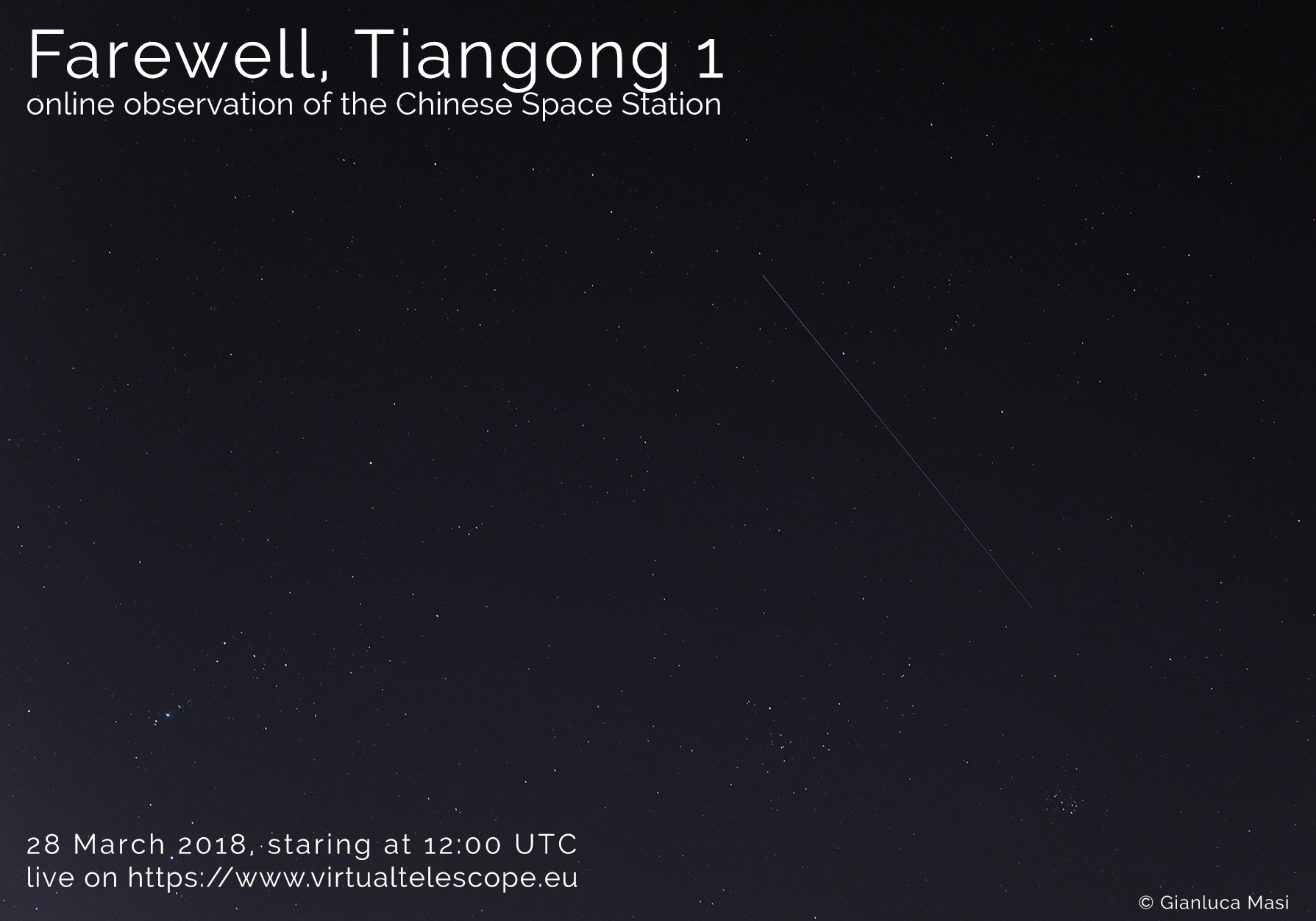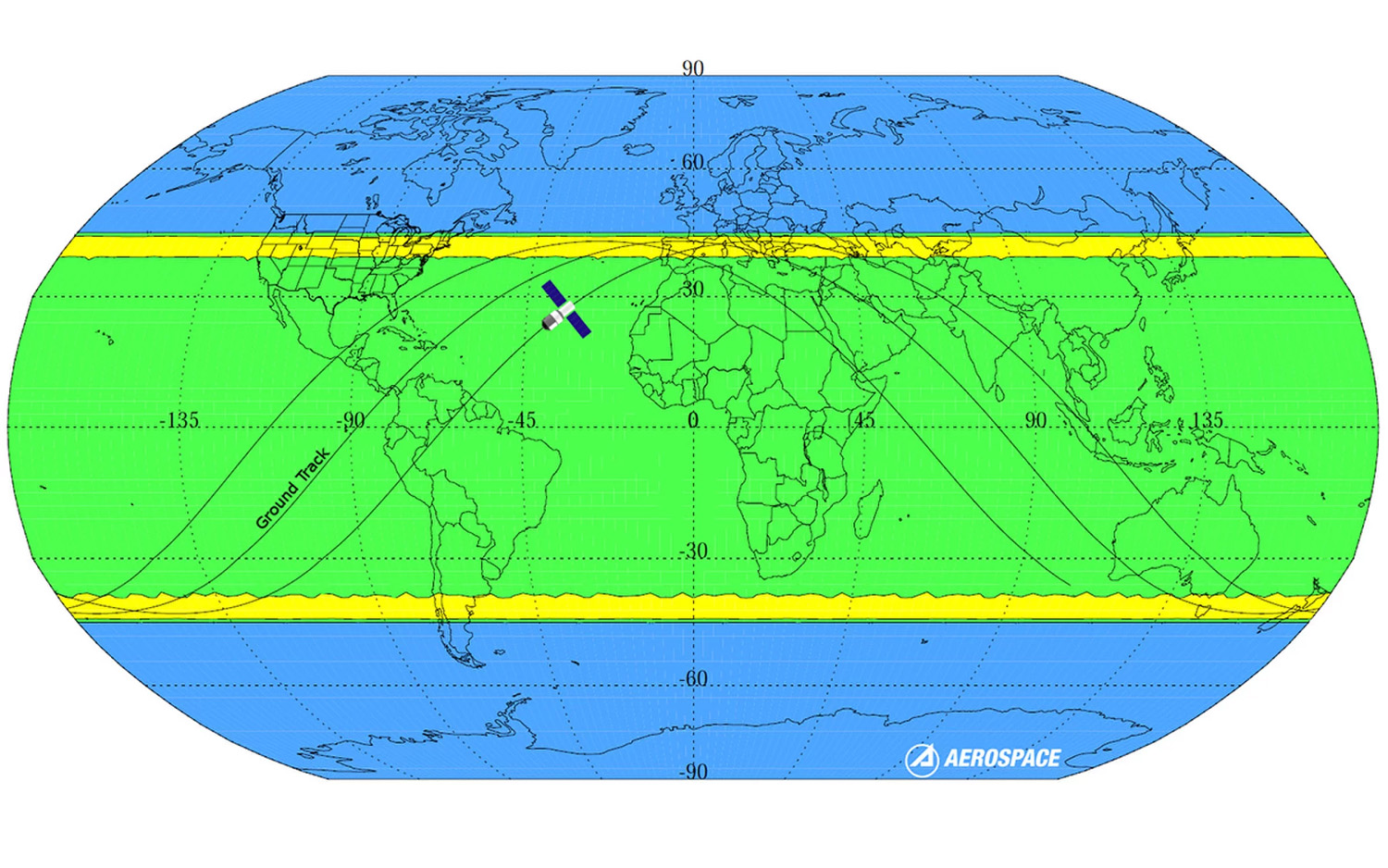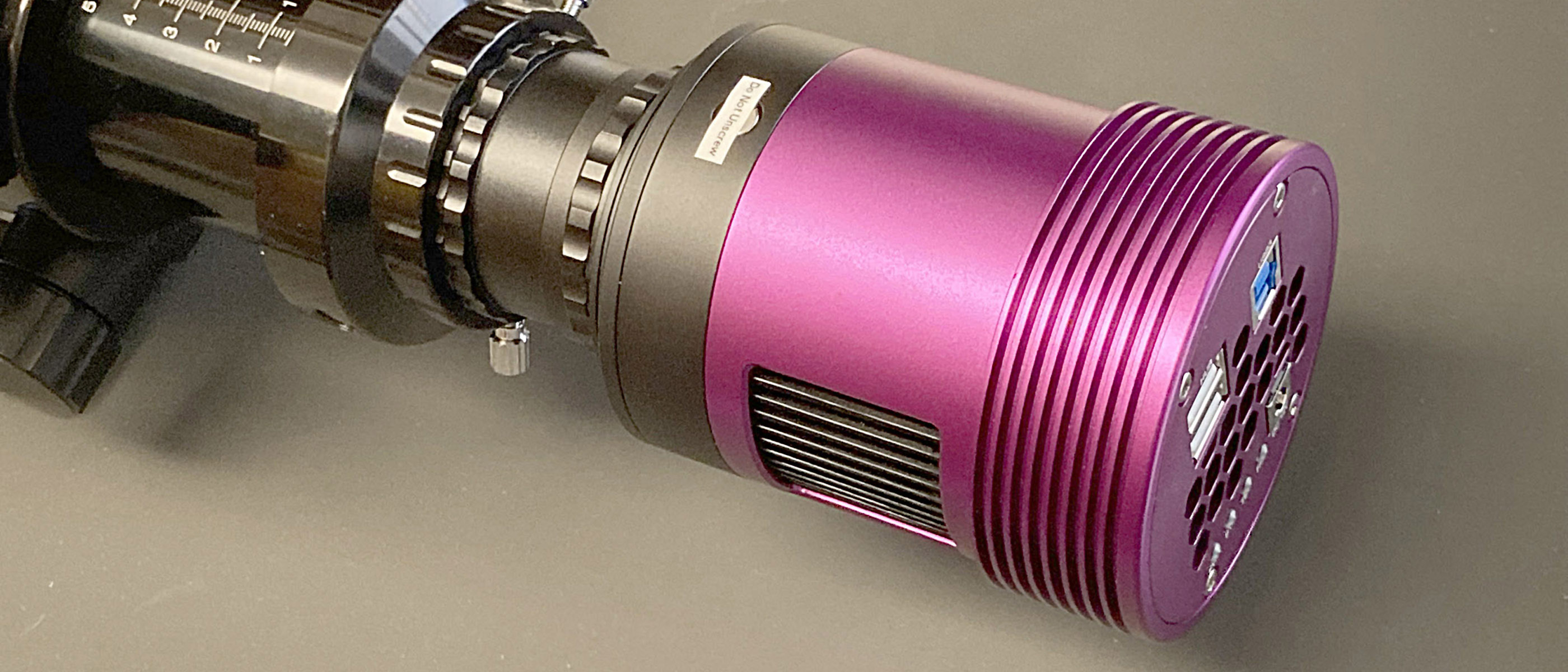Watch China's Tiangong-1 Space Station in Real Time As It Nears Its Demise
As Tiangong-1 makes its last few orbits of Earth before burning up in the atmosphere in a few days, you can watch the Chinese space station live online through a robotically controlled telescope at The Virtual Telescope Project.
Live coverage of the event will start Wednesday (March 28) at 8 a.m. EDT (1200 GMT), but the organizers said the timing could change closer to the event. You can visit this page on The Virtual Telescope Project's website to see updates.
"The Tiangong-1 Chinese space station is re-entering our atmosphere soon," representatives for The Virtual Telescope Project wrote in a statement. "The Virtual Telescope Project and Tenagra Observatories offer you the unique chance to see it during one of its very last passages across the skies. You can join us online, via the internet, from the comfort of your home." [China's Space Station Crash: Everything You Need to Know]
Tiangong-1 is the first Chinese space station; it launched in 2011 and hosted two crews of Chinese astronauts, in 2012 and 2013. It remained operational until 2016, when contact with the space station was lost. The station is now falling toward Earth and is expected to burn up in the atmosphere over Easter weekend (March 30 to April 2).

It's unclear how much of Tiangong-1 will survive the journey, but it's possible some pieces will fall to the ground. The station has an orbital inclination between 43 degrees north and 43 degrees south latitudes, so it could fall anywhere within those bands. But experts point out that Tiangong-1 is much smaller than the NASA Skylab space station, parts of which crashed into remote areas of Australia in 1979, so most of it may burn up during re-entry. Tiangong-1 weighs only 8.5 metric tons (9.4 tons), compared to Skylab's 100 tons.

The Virtual Telescope Project is managed by astronomer Gianluca Masi and includes several robotic telescopes that can be accessed in real time online. The project also hosts periodic public online observing events, which include live commentary.
Follow us @Spacedotcom, Facebook and Google+. Original article on Space.com.
Get the Space.com Newsletter
Breaking space news, the latest updates on rocket launches, skywatching events and more!
Join our Space Forums to keep talking space on the latest missions, night sky and more! And if you have a news tip, correction or comment, let us know at: community@space.com.

Elizabeth Howell (she/her), Ph.D., was a staff writer in the spaceflight channel between 2022 and 2024 specializing in Canadian space news. She was contributing writer for Space.com for 10 years from 2012 to 2024. Elizabeth's reporting includes multiple exclusives with the White House, leading world coverage about a lost-and-found space tomato on the International Space Station, witnessing five human spaceflight launches on two continents, flying parabolic, working inside a spacesuit, and participating in a simulated Mars mission. Her latest book, "Why Am I Taller?" (ECW Press, 2022) is co-written with astronaut Dave Williams.










